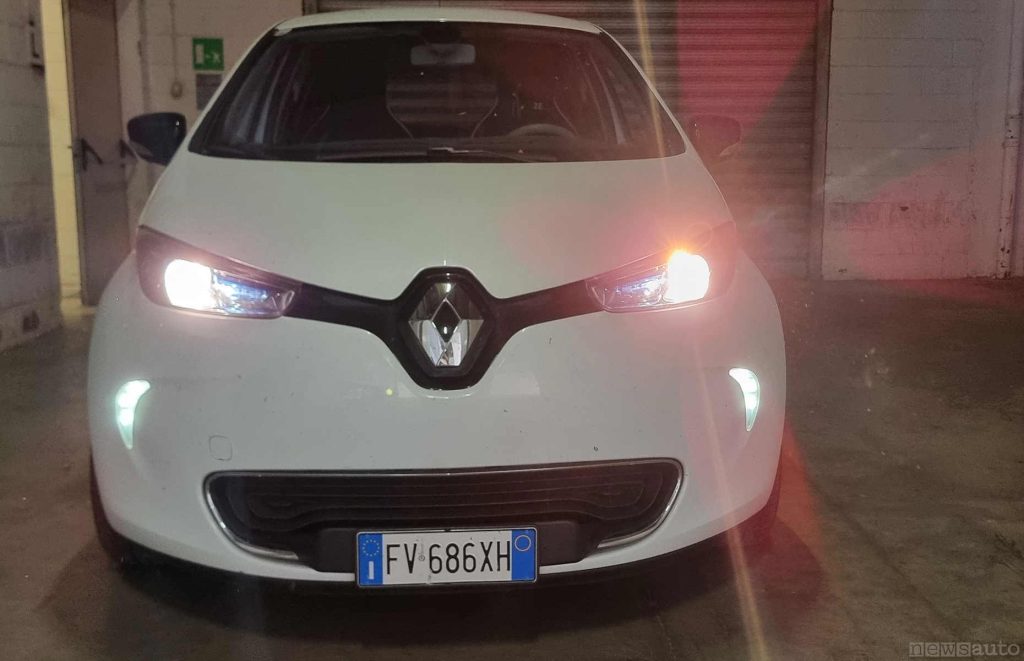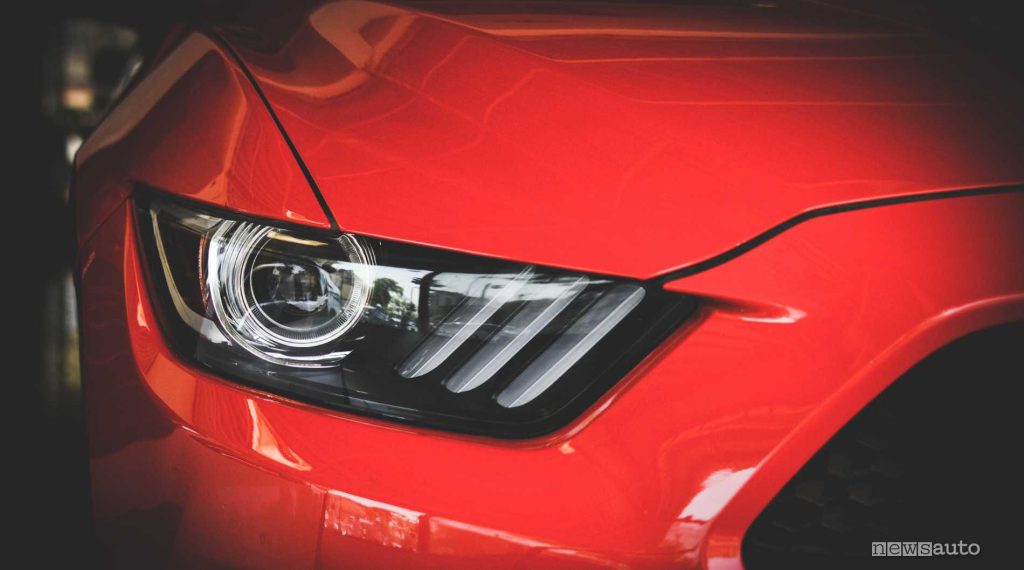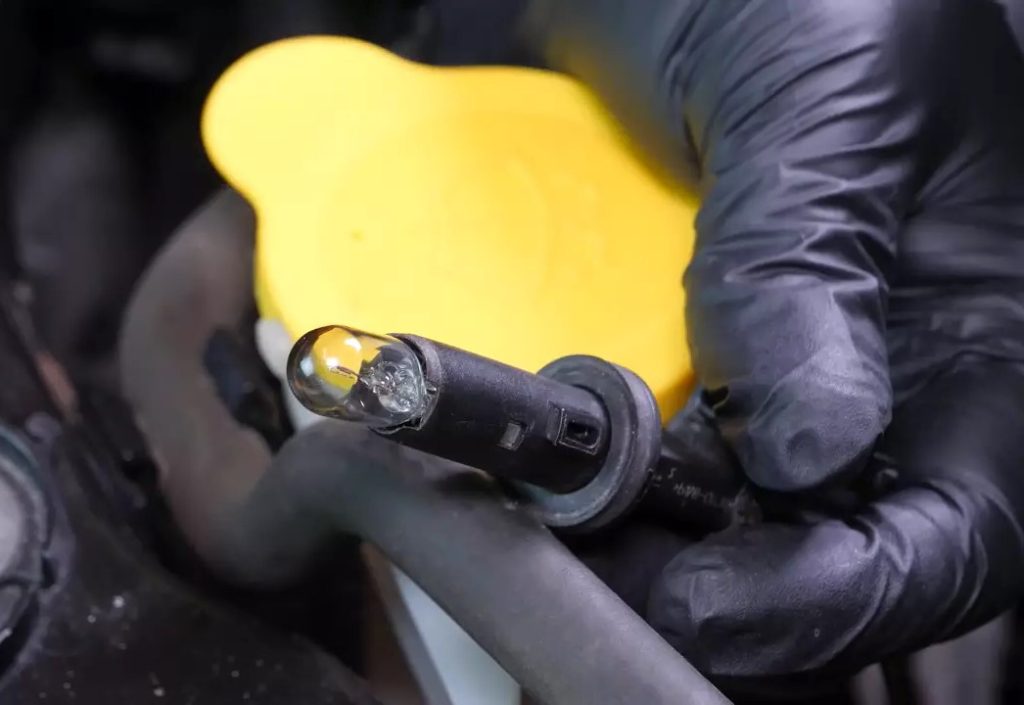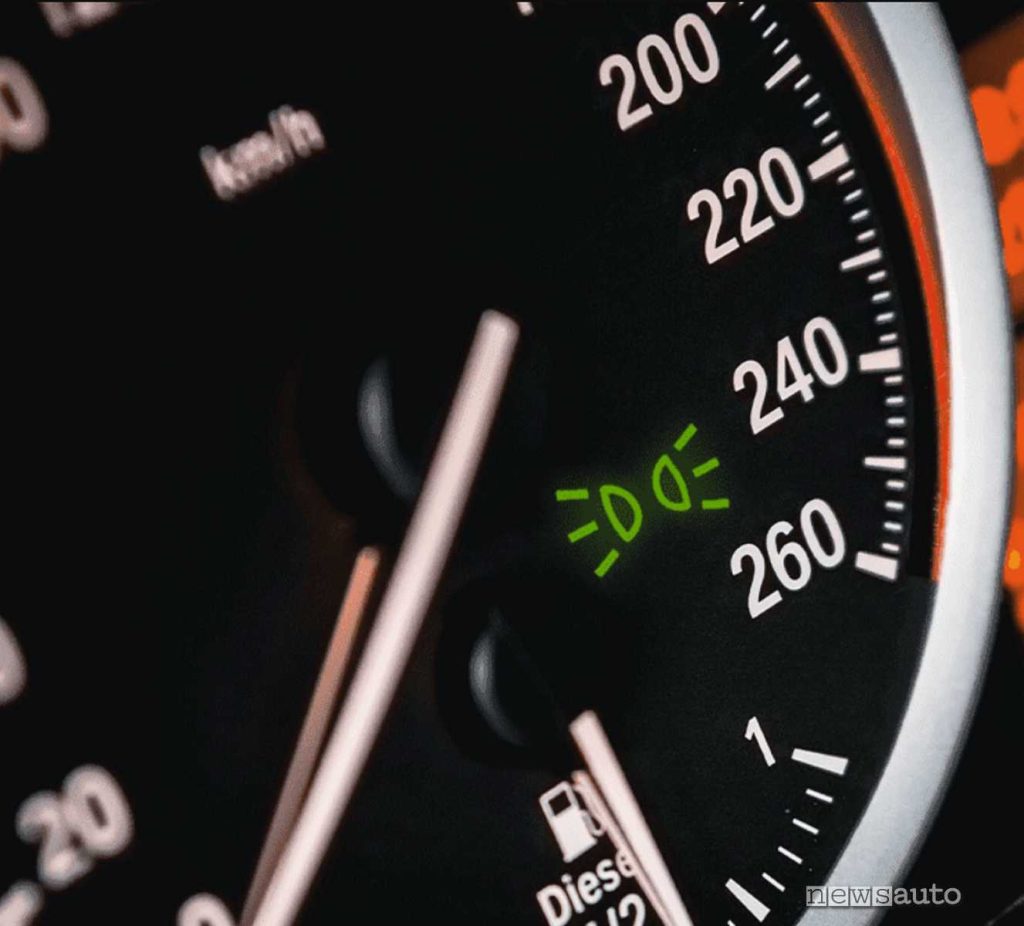The position lights have been specially designed for make the vehicle visible when stationary or in conditions of poor visibility. Unlike low beams or high beams, they are not intended to illuminate the road, but rather to indicate the position of the vehicle to other road users. Here are their main functions, what the regulations say and the difference with other lighting systems.
Sidelights, what are they for and what is the difference with daytime lights?
The position lights are basically small white headlights at the front of the vehicle, and red at the rear.. Their function main one is that of make the presence of the vehicle known to other driversespecially in conditions of poor visibility (at night or in dimly lit areas).
The front position lights are white or yellow, while the rear ones are red. This difference helps other road users to understand the direction of the vehicle. The intensity of the position lights is less powerful than the low beam or high beam because its purpose is to indicate the presence of the vehicle.

Unlike the position lights, the daytime running lights instead (also known as Daytime Running Lights) are mandatory on vehicles approved since 2011 and have effectively replaced the position lights. They comply with EU Directive 97/28, amended in Italy by the Prime Ministerial Decree of 14 November 1997. Daytime running lights require the low beam headlights to be turned on during the day under certain circumstances.
The position lights They are used to signal the presence of a car stopped at night, highlighting its size. Daytime running lights (DRL), Instead, they are used to comply with theMandatory use of dipped headlights during the dayunder certain conditions (which we will see later). When the side lights are turned on, the rear lights also turn on at the same time, which does not happen with the daytime running lights.
Some cars have both parking lights and DRLs, each with a dedicated lamp. In other cases, the same lamp, usually LED, performs both functions by varying the intensity.
The light control includes a dedicated switch for the parking lights, while on other models this function is activated differently.
In summary, The position lights can be combined or integrated with other lighting systemsor:
- Daytime running lights (DRL): In many modern cars, these turn on automatically while driving to achieve greater visibility.
- Rear lights: when the front position lights come on, the rear ones do the same.
Side lights and daytime running lights, when they are mandatory, what the law and the Highway Code say
In several countries, the use of position lights is regulated by the Highway Code. For example:
- In some situations, the position lights must be turned on in certain weather conditions, such as heavy rain, fog or twilight, or when driving on dark roads.
- The position lights may not be sufficient to ensure good visibility when driving at night or in conditions of poor visibility, so they should not be used exclusively when driving.
In the Bel Paese, it is the Highway Code itself that tells us when it is necessary to use the position lights and daytime running lights. Precisely in articles: 152 and 153.
ThereArticle 152 states the following:
“Motor vehicles when driving outside built-up areas and mopeds, motorcycles, tricycles and quadricycles, as defined respectively in Article 1, paragraph 2, letters a), b) and c), and paragraph 3, letter b), of Directive 2002/24/EC of the European Parliament and of the Council of 18 March 2002, even when driving in built-up areas, are required to use position lights, dipped beam headlights and, if prescribed, license plate lights and clearance lights. Outside the cases indicated in Article 153, paragraph 1, daytime running lights may be used instead of the devices referred to in the previous period, if the vehicle is equipped with them. Vehicles of historical and collector interest are exempt from the obligation to use the aforementioned devices. Anyone who violates the provisions of this Article is subject to an administrative sanction consisting of the payment of a sum ranging from €42 to €173“.

While theArticle 153 declares that:
“From half an hour after sunset to half an hour before sunrise and also during the day in tunnels, in case of fog, falling snow, heavy rain and in any other case of poor visibility, during the movement of motor vehicles and towed vehicles, the position lights, the license plate lights and, if prescribed, the clearance lights must be kept on. In addition to these lights, on motor vehicles, the dipped beam headlights must also be kept on. Except as provided in paragraph 3, the deep beam headlights may be used outside built-up areas when external lighting is lacking or insufficient. However, during brief interruptions in the movement connected with traffic requirements, the dipped beam headlights must be used“.
Fine for parking lights and daytime lights off, when they are mandatory
So, in case you have to drive with the parking lights are off or not compliant with the rules (when ignition is required), you will face a fine ranging between 42 and 173 euros. And if there is poor visibility of the road, it comes a point was also removed from the license. So let’s be clear, Outside built-up areas, the dipped headlights must always be on, and can be replaced by daytime lights only in conditions of perfect visibility. In all other situations with poor visibility in the presence of rain or fog, it remains mandatory to have the dipped headlights on, even in tunnels.
How to replace damaged parking lights
Replacing a parking light it’s a task simple enough (it is always advisable to have this operation carried out by a trusted mechanic), but it requires the utmost attention to be carried out correctly. Obviously, it is necessary to specify that the procedure can be done independently only and exclusively if you have the right practice. First of all you need to equip yourself with Necessary tools: one new light bulb compatible with his own vehicle (check manual to purchase correct type); screwdriver (in case of need to remove the cover); gloves (It is best to avoid direct contact with the bulb).

Here, then, are the passages which must be done for the replacement:
- Park the vehicle in a good position – i.e. on a flat surface – and turn off the engine.
- To avoid overheating, make sure the car is cool, especially if it has just been driven.
- Open the hood for the front lights or the trunk for the rear lights.
- Locate the light cluster that contains the parking light. For the front lights, it will be near the main headlights; for the rear lights, they will be integrated into the rear lights.
- Remove the cover (if present) with a screwdriver – if necessary -.
- Remove the burned out bulb by locating the bulb holder, which is usually attached to a connector.
- Turn the bulb holder counterclockwise and pull gently to remove the bulb.
- Remove the faulty bulb from the bulb holder, taking care not to damage the connector.
- Insert the new bulb into the socket, wearing gloves to avoid touching it directly (fingerprints can shorten the life of the bulb), making sure it is securely fastened.
- Replace the bulb holder and turn it clockwise to secure it. If the cover or protective panel has been removed, this must also be replaced.
After replacing the bulb, you need to start the car and check that the new parking light works properly.
All modifications are strictly prohibited, otherwise you will receive a hefty fine: more than 300/400 euros.
What is the parking light indicator?
The position lights are indicated by a green light (present in the picture, to find out all the warning lights click here) with two small circles in the center and three lines that start from the two circles and go in opposite directions.

The side lights icon appears on the instrument panel when they are on. The daytime running lights, on the other hand, are activated automatically when the engine is started, when the high beams are off.
#Sidelights #daytime #lights #mandatory